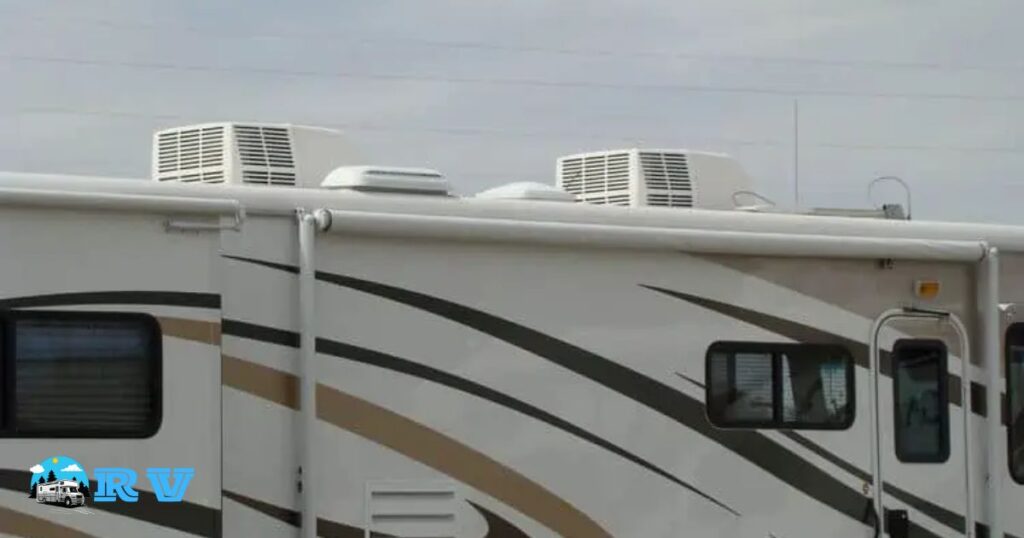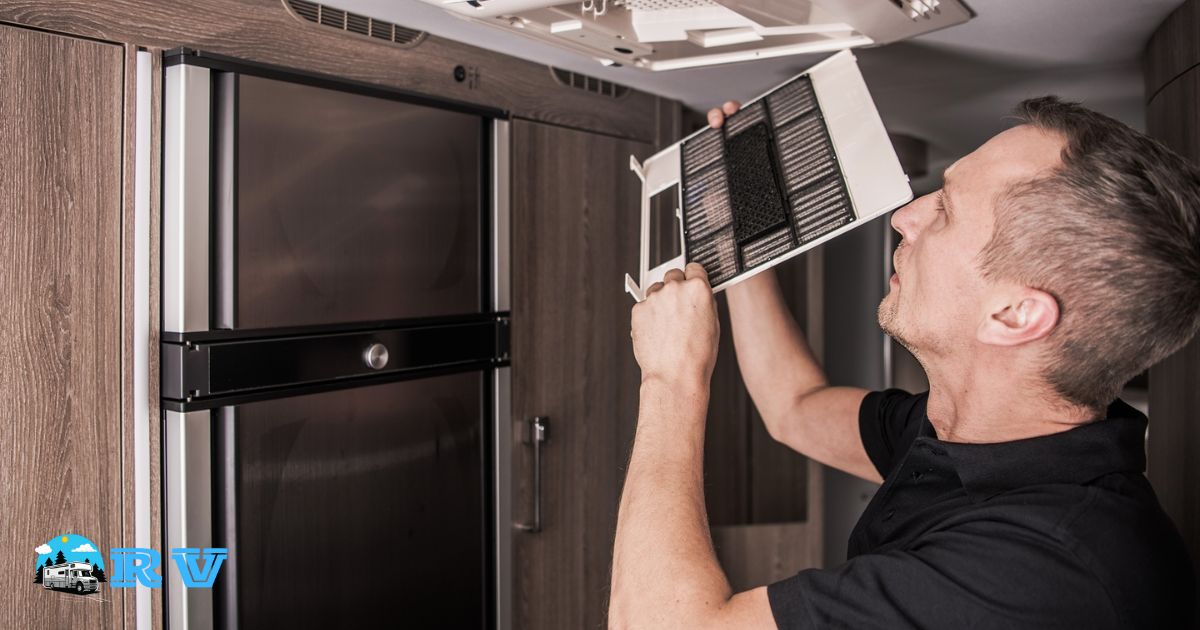RV air conditioners are essential for maintaining comfort and enjoyment during your road trips and adventures. However, like any other appliance, they can encounter issues that require troubleshooting and resetting. Knowing how to reset your RV air conditioner can save you from discomfort and costly repairs.
Tired of sweating it out in your RV when the air conditioner acts up? If you’ve ever wondered, How do you reset an RV air conditioner? we’ve got the solution for you. In just a few simple steps, you can regain your cool and comfort. And learn how to reset your RV air conditioner, and enjoy your travels in comfort once again.
Why Resetting Your RV Air Conditioner Is Important
Regular maintenance and resetting of your RV air conditioner can:
· Improve Efficiency: A well-maintained air conditioner runs more efficiently, ensuring you stay comfortable while conserving energy.
· Extend Lifespan: Proper resetting and maintenance can help extend the lifespan of your RV air conditioner, preventing premature breakdowns and replacements.
· Save Money: Avoid costly repair bills by addressing issues through resetting and routine maintenance.
· Enhance Comfort: A well-functioning air conditioner provides consistent cooling, making your RV experience more enjoyable.
When to Reset Your RV Air Conditioner

Before diving into the reset procedure, it’s crucial to recognize the signs that your RV air conditioner might need resetting. Common indicators include:
Reduced Cooling Capacity
If your RV air conditioner doesn’t cool the interior space as effectively as it used to, it might be time for a reset.
Frequent Cycling On and Off
An air conditioner that cycles on and off too frequently can indicate a problem that requires resetting.
Unusual Noises
Strange noises such as banging, clanking, or rattling could suggest a problem with your air conditioner that might be resolved by resetting it.
Reduced Airflow
If you notice a decrease in the airflow coming from the vents, a reset might be in order.
Inconsistent Temperature
Your RV air conditioner should maintain a consistent temperature. If you experience fluctuations in cooling, it’s time to consider a reset.
Ice Buildup
Ice forming on the coils or anywhere inside the unit is a clear sign that something is amiss and a reset could help.
Preparing for the Reset
Before proceeding with the reset process, you should undertake some essential preparatory steps:
Turn Off the Power
Ensure the RV is disconnected from shore power or generator, and the RV air conditioner is turned off. Safety should always be a priority.
Gather Tools and Equipment
You might need some tools and equipment to perform a reset, depending on your air conditioner type and brand. Common tools include a screwdriver, pliers, and a multimeter for electrical checks.
Consult Your RV Manual
Your RV’s manual is a valuable resource for understanding the specific procedures for resetting your air conditioner, as well as manufacturer recommendations.
How to Reset an RV Air Conditioner
The process for resetting an RV air conditioner can vary depending on the model and brand. Here, we’ll provide a general guide that covers the most common methods. Always refer to your RV and air conditioner’s manuals for precise instructions.
Access the Control Panel
Locate the Thermostat: The thermostat controls your RV air conditioner. It’s often found on the wall inside your RV. If you have a digital thermostat, there will be buttons or a touchscreen for adjustments.
Turn Off the Power: Make sure the air conditioner is completely turned off before you begin.
Reset the Thermostat
Reset Button: Some thermostats have a reset button that you can press to reset the system. This is the simplest method. If your thermostat has a reset button, press it and hold it for a few seconds.
Power Cycling: If there’s no reset button, you can power cycle the thermostat. To do this, turn off the thermostat, wait for a few seconds, and then turn it back on. This can help clear any minor issues in the thermostat’s programming.
Reset the Circuit Breaker
Locate the Circuit Breaker Panel: The circuit breaker panel is usually located in your RV, often near the entry door. It may also be in the utility compartment.
Identify the Air Conditioner Breaker: Find the breaker specifically labelled for the air conditioner. It’s typically labelled as A/C or Air Conditioner.
Turn Off and On: First, turn off the air conditioner breaker. Wait for a minute or two, then turn it back on. This action effectively resets the power supply to the air conditioner.
Check for Error Codes (Optional)
Some modern RV air conditioners have error code displays. If your unit has this feature and you’re comfortable with interpreting the codes, you can check for error messages and consult your manual for further guidance.
Perform a System Test (Optional)
If your air conditioner has a diagnostic or test mode, you can initiate a system test to check for any issues. This is another optional step and should be conducted according to your RV air conditioner’s manual.
Monitor for Proper Functionality
After following the reset procedure, turn the air conditioner back on and observe its performance. Make sure the air is cooling properly, and the unit isn’t exhibiting any unusual behavior.
Regular Maintenance
In addition to resetting, you should also perform regular maintenance to keep your RV air conditioner in peak condition. This includes cleaning or replacing filters, checking for leaks, and inspecting the unit’s components.
Common Issues That Require Resetting
RV air conditioners can encounter several common problems that might necessitate a reset. Explore these issues and the steps to resolve them.
| Common Issue | Description | Solution |
| Frozen Evaporator Coils | Evaporator coils freeze, reducing cooling capacity | 1. Turn off the air conditioner. 2. Allow thawing. 3. Check for obstructions. 4. Monitor functionality. |
| Electrical Issues | Air conditioner not turning on, frequent cycling | 1. Check the power source. 2. Inspect and reset the circuit breaker. 3. Inspect wiring and connections. 4. Use a multimeter for electrical checks. 5. Consult a professional if needed. |
| Thermostat Troubles | Temperature fluctuations, inaccurate readings | 1. Reset the thermostat. 2. Check wiring. 3. Replace the thermostat if malfunctioning. |
| Air Filter Problems | Clogged or dirty air filter reducing airflow | 1. Remove and clean or replace the air filter. 2. Ensure proper seating. 3. Regularly clean or replace the filter. |
| Refrigerant Leaks | Reduced cooling capacity and ice on coils | 1. Consult a professional technician for refrigerant leaks. 2. Regular preventative maintenance for early leak detection. |
Frozen Evaporator Coils
Issue: When the evaporator coils in your air conditioner freeze, it can result in reduced cooling capacity and poor airflow.
Solution:
- Turn off the air conditioner.
- Allow the unit to thaw. This may take several hours.
- Check for any obstructions or clogs in the air ducts.
- Once the unit is completely thawed, turn it back on and monitor for proper functionality.
Electrical Issues
Issue: Electrical problems can manifest as the air conditioner not turning on, frequent cycling, or unusual noises.
Solution:
- Check the power source, including the RV’s power connection and any extension cords.
- Inspect the circuit breaker and reset it if necessary.
- Look for loose or damaged wires and connections.
- If you’re comfortable with electrical work, use a multimeter to check for voltage and continuity.
- Consult a professional if you suspect a complex electrical problem.
Thermostat Troubles
- Issue: Thermostat issues can result in temperature fluctuations, inaccurate readings, or the air conditioner not turning on.
Solution
- Reset the thermostat using the methods described earlier.
- Check the thermostat’s wiring for loose or damaged connections.
- Replace the thermostat if it’s malfunctioning.
Air Filter Problems
- Issue: A clogged or dirty air filter can reduce airflow and cooling efficiency.
Solution:
- Remove and clean the air filter. If it’s heavily soiled, replace it.
- Ensure the filter is properly seated when reinstalling it.
- Regularly inspect and clean or replace the filter as needed.
Refrigerant Leaks
Issue: Refrigerant leaks can result in reduced cooling capacity and the development of ice on the coils.
Solution:
- If you suspect a refrigerant leak, consult a professional technician. Refrigerant handling requires specialized equipment and knowledge.
- Preventative maintenance can help identify potential refrigerant leaks before they become severe.
FAQ’s
Where is the AC reset button?
The AC reset button’s location varies depending on the specific air conditioning unit or system; it’s typically found on the control panel or near the unit’s power source.
How do I manually reset my AC unit?
To manually reset your AC unit, first turn off the power at the thermostat and the circuit breaker for a few minutes, then switch them back on to reset the system.
How to restart a compressor?
To restart an AC compressor, turn off the unit, wait for at least 5 minutes to allow pressures to equalize, and then turn it back on.
Conclusion
Maintaining and resetting your RV air conditioner is essential to ensure that your adventures on the road are comfortable and enjoyable. By recognizing the signs of issues and understanding how to run your RV air conditioner on 30 amps, following the reset procedures, and addressing common problems, you can keep your RV air conditioner in peak condition, save on repair costs, and extend its lifespan.
Regular maintenance and attention to detail are the keys to ensuring your RV’s air conditioning system performs reliably, allowing you to focus on what matters most to your travel experiences. Remember to consult your RV’s manual and seek professional assistance when needed for complex issues.











